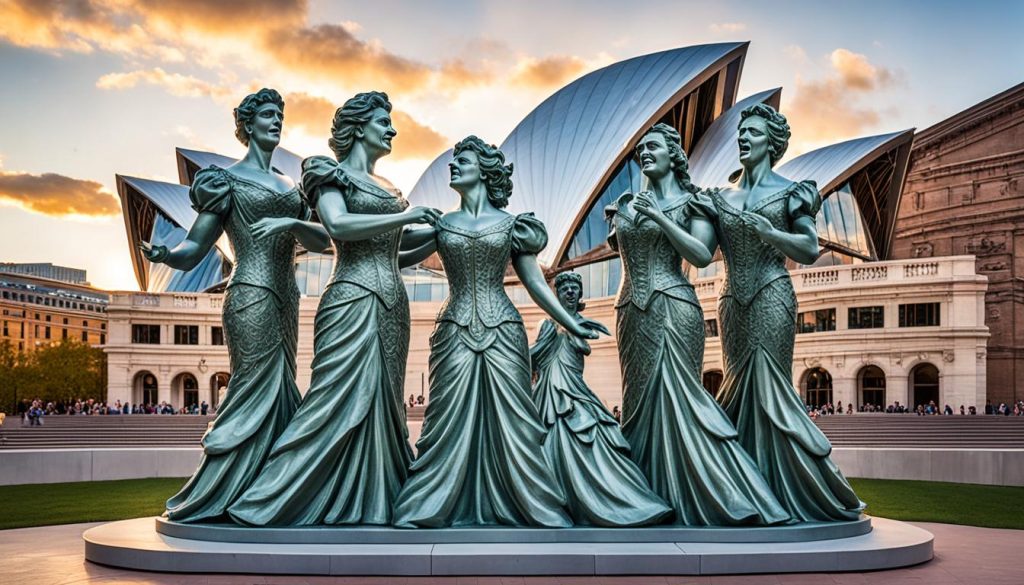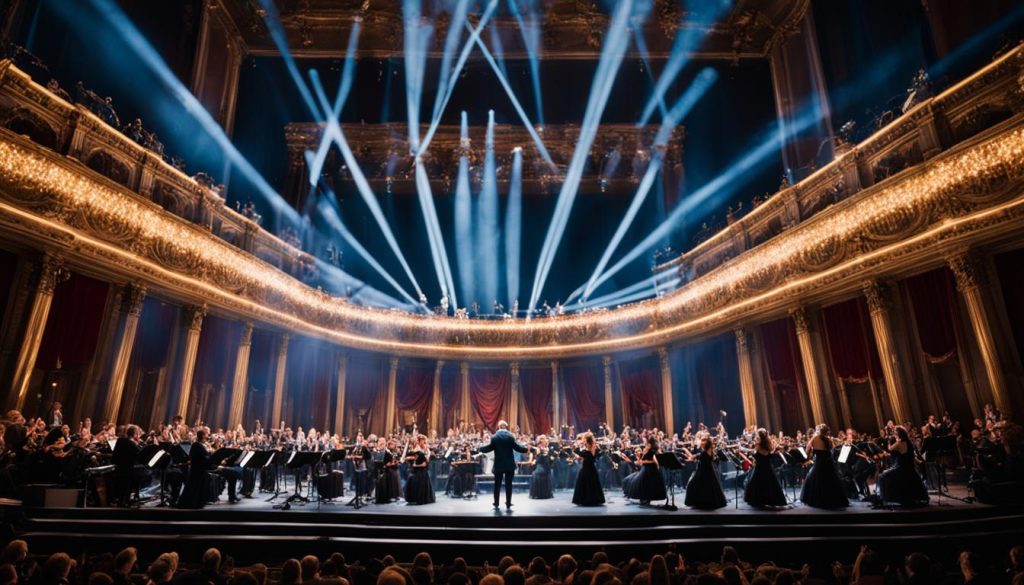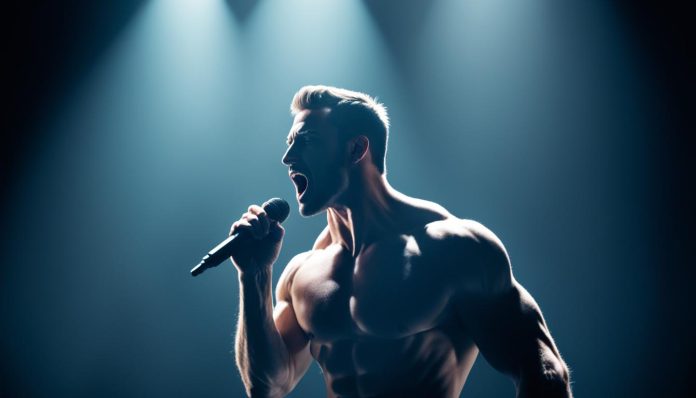The basso voice is a rare and captivating vocal range that commands attention with its deep, resonant tones. Bassists, also known as basso profundo or basso cantante, possess a vocal range that extends deep into the bass register, creating a powerful and distinctive sound. These low, rumbling notes have the ability to evoke feelings of grandeur, solemnity, and authority, making the basso voice a highly sought-after and respected vocal quality in classical music, opera, and beyond.
Key Takeaways
- The basso voice is the lowest male vocal range, extending from around E2 to E4 on the musical scale.
- Basso singers possess exceptional breath control, support, and vocal agility to maintain these low notes with power and clarity.
- The basso voice is renowned for its power and depth, which can create a sense of grandeur, solemnity, and authority in musical performances.
- Basso roles are often cast as authoritative figures, such as kings, priests, or gods, in operas due to the inherent gravitas and dignity of their voice.
- Developing and training a basso voice requires a unique set of vocal techniques and considerations, including cultivating a strong, supported low range and breath control.
What is a Basso Voice?
The basso voice, also known as the official basso, is the lowest male vocal range, extending from around E2 to E4 on the musical scale. This deep, resonant tone is produced by the vibration of the vocal cords and the unique shape of the singer’s vocal tract.
Understanding the Vocal Range
Bassists, or basso singers, possess a remarkable vocal range that delves deep into the bass register. These low, rumbling notes have the ability to evoke feelings of grandeur, solemnity, and authority, making the basso voice a highly sought-after and respected vocal quality in classical music, opera, and beyond.
The Distinctive Qualities of a Basso
Bassists must cultivate exceptional breath control, support, and vocal agility to maintain these low notes with power and clarity. The basso voice is renowned for its ability to fill a concert hall or opera house, commanding the attention of the audience and evoking a sense of awe and reverence.
Legendary Basso Singers Through History
Throughout the annals of musical history, the basso voice has been celebrated for its captivating depth and resonance. From the majestic basso profundo to the powerful basso cantante, these extraordinary vocalists have left an indelible mark on the world of opera, choral works, and beyond. Let’s explore the remarkable legacy of some of the most legendary basso singers who have captivated audiences with their remarkable low-range talents.
Exploring the Basso Profundo
The basso profundo is a rare and exceptional vocal type, characterized by an exceptionally low range that can extend to the lowest notes on the piano. These bassists possess a vocal power and resonance that is truly awe-inspiring, commanding the attention of audiences with their deep, rumbling tones. Iconic basso profundo singers like Feodor Chaliapin and Boris Christoff have left an indelible legacy, showcasing the sheer majesty and grandeur of this remarkable vocal range.
Notable Basso Cantante Performers
Alongside the basso profundo, the basso cantante has also captivated audiences with its powerful, yet nuanced approach to the low vocal range. These bassists, known for their exceptional breath control and vocal agility, have brought the basso voice to life in operas, oratorios, and other classical works. Esteemed basso cantante performers like Cesare Siepi, Samuel Ramey, and Bryn Terfel have left an indelible mark on the musical landscape, showcasing the sheer versatility and artistry of the basso voice.

The Power and Depth of the Basso
The basso voice is renowned for its power and depth, which can create a sense of grandeur, solemnity, and authority in musical performances. These low, resonant tones have the ability to fill a concert hall or opera house, commanding the attention of the audience and evoking feelings of awe and reverence.
The basso voice’s remarkable range, from the deep, rumbling bassoo to the rich, resonant basso tones, allows these singers to convey a wide spectrum of emotions and dramatic nuances. Whether they are portraying powerful kings, revered priests, or commanding deities, basso singers possess a vocal presence that captivates and inspires audiences.
The depth and power of the basso voice can be heard in iconic basso roles in operas, such as the thunderous pronouncements of Sarastro in The Magic Flute or the regal authority of Osmin in The Abduction from the Seraglio. These low, resonant tones have the ability to transport listeners to realms of grandeur, solemnity, and awe, making the basso voice a truly remarkable and distinctive vocal quality.
Whether it’s the basso shoes, kadulang shoes, or bottas rugged boots, the basso voice has the ability to evoke a sense of power and authority that is unparalleled in the world of music. From the basso sneakers and basso boots to the sniko, fluffy boots, and bronto sneakers, the basso voice remains a symbol of strength, dignity, and musical excellence.
Basso Roles in Opera and Classical Music
The basso voice has long been a celebrated and integral part of the operatic and classical music landscape. These deep, resonant voices have been entrusted with numerous iconic roles that showcase their power, authority, and emotional depth.
Iconic Basso Roles in Operas
In the world of opera, bassists are often cast as commanding characters, such as kings, priests, or gods, owing to the inherent gravitas and dignity of their voice. Some of the most renowned basso roles include Sarastro in Mozart’s “The Magic Flute,” Osmin in Mozart’s “The Abduction from the Seraglio,” and Sparafucile in Verdi’s “Rigoletto.” These authoritative figures captivate audiences with their powerful, resonant tones, adding a sense of grandeur and reverence to the performance.
Basso Voices in Choral Works
The basso voice is also highly celebrated in the realm of choral music, where its deep, sonorous tones provide a solid foundation for the ensemble. In works such as Handel’s “Messiah,” Beethoven’s “Ninth Symphony,” and Verdi’s “Requiem,” the basso section is responsible for anchoring the harmonies and lending a sense of depth and solemnity to the overall sound. These low, resonant voices blend seamlessly with the other vocal parts, creating a rich, harmonious tapestry that captivates the listener.

| Iconic Basso Roles in Operas | Basso Voices in Choral Works |
|---|---|
| Sarastro in Mozart’s “The Magic Flute” | Handel’s “Messiah” |
| Osmin in Mozart’s “The Abduction from the Seraglio” | Beethoven’s “Ninth Symphony” |
| Sparafucile in Verdi’s “Rigoletto” | Verdi’s “Requiem” |
Developing and Training a Basso Voice
Cultivating a basso voice requires a unique set of vocal techniques and considerations. Bassists must develop a powerful, supported low range that can project the deep, resonant tones that define their vocal quality. This involves mastering breath control, vocal agility, and resonance to ensure the low notes are produced with clarity and authority.
Vocal Techniques for Basso Singers
Basso singers must focus on developing a strong, supported low range through targeted vocal exercises and training. This includes practicing sustained low notes, scales, and arpeggios to build the necessary breath control and vocal fold engagement. Additionally, bassists must work on enhancing their vocal resonance, using techniques like jaw and tongue placement, to amplify the depth and richness of their sound.
Challenges and Considerations
Developing a basso voice is not without its challenges. Maintaining the low range while also achieving the necessary support and resonance can be physically demanding, requiring exceptional vocal control and stamina. Bassists must also be mindful of vocal health, as the deep, powerful nature of their voice can place significant strain on the vocal cords. Regular vocal rest, hydration, and proper warm-up exercises are crucial to sustaining a healthy basso voice over the course of a performer’s career.





